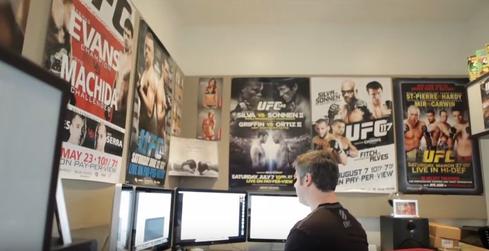Fighting events take heavyweight data storage. Here's how the Ultimate Fighting Championship makes the most of big data.


Using Data To Fight Wildfires: An Inside Look
Using Data To Fight Wildfires: An Inside Look (Click image for larger view and slideshow.)
The Ultimate Fighting Championship, commonly known as the UFC, currently hosts 48 live mixed martial arts events annually around the world. The fights are big business -- made better by big data.
"We are recording every second of those fights," said Jeff Quinn, IT director for the UFC, in a phone interview.
The fights can be short. Ronda Rousey's August 1 match with Bethe Correia in Rio de Janeiro lasted only 34 seconds. But in the world of pay-per-view television, when the UFC buys a three-hour block of time, it has to fill the space.
[Having trouble making sense of disparate data? Read Data Visualizations: 11 Ways To Bring Analytics To Life.]
"If we do have a fight that goes uniquely short, we've got the undercard we can use to fill in the gap," explained Quinn.
So a typical fight card includes 10 to 15 bouts with different fighters. Each event takes about six to seven hours to produce. Every second of fighting is captured with the help of 30 different cameras. Additional cameras document what's going on backstage. The result is a lot of data.
About three years ago the UFC moved to a tapeless work flow, which avoids the delay of intermediate encoding and helps the organization turn its content around as quickly as possible. "We're taking all the feeds from those cameras and doing an on-site encode of those files into our native file format and storing it to [RAID] hardware packs," said Quinn.
The organization stores its video files in the ProRes 422 format, which requires about 145 Mbps or 18.1 MBps of storage for HD video. That's roughly 1 GB per minute. In all, the UFC's production team captures somewhere between 10 TB and 15 TB of video data per event.
The UFC had been ingesting its content into its digital asset management system and moving it into long-term storage on Linear Tape-Open (LTO) drives. But there's a limit to the speed at which data can be recalled from an LTO tape. To reduce that bottleneck, about 18 months ago the UFC turned to Quantum's Lattus system to store its content. The cloud was not an option.
"We decided to go with an owned, in-house solution, at initial investment of about five-and-a-half petabytes of storage," Quinn said. "What three years ago used to take almost 30 minutes (to export a 15-minute fight from our tape environment for one single camera angle), in our Lattus environment takes us roughly 30 seconds."
Quinn said that for the scale required -- enough to store and rapidly recall 50,000 hours of mixed martial arts content -- the UFC need something extremely robust that could also handle its bandwidth requirements. "Our mezzanine files for a given fight can climb up to 300 TB to 400 TB in size, and if we needed to export that, that's where the big name cloud providers would start to fall a bit short," he said.
Storing so much data in the cloud would also add to the UFC's operational expenses through high bandwidth costs. "We would have had to support some extremely high-capacity connectivity, going to 10 gigabytes per second and beyond, in order to move our files around at the pace we needed," said Quinn. "Our biggest challenge is to take all that content and monetize it as fast as possible."
Time is money, particularly for the UFC.
About the Author(s)
You May Also Like







